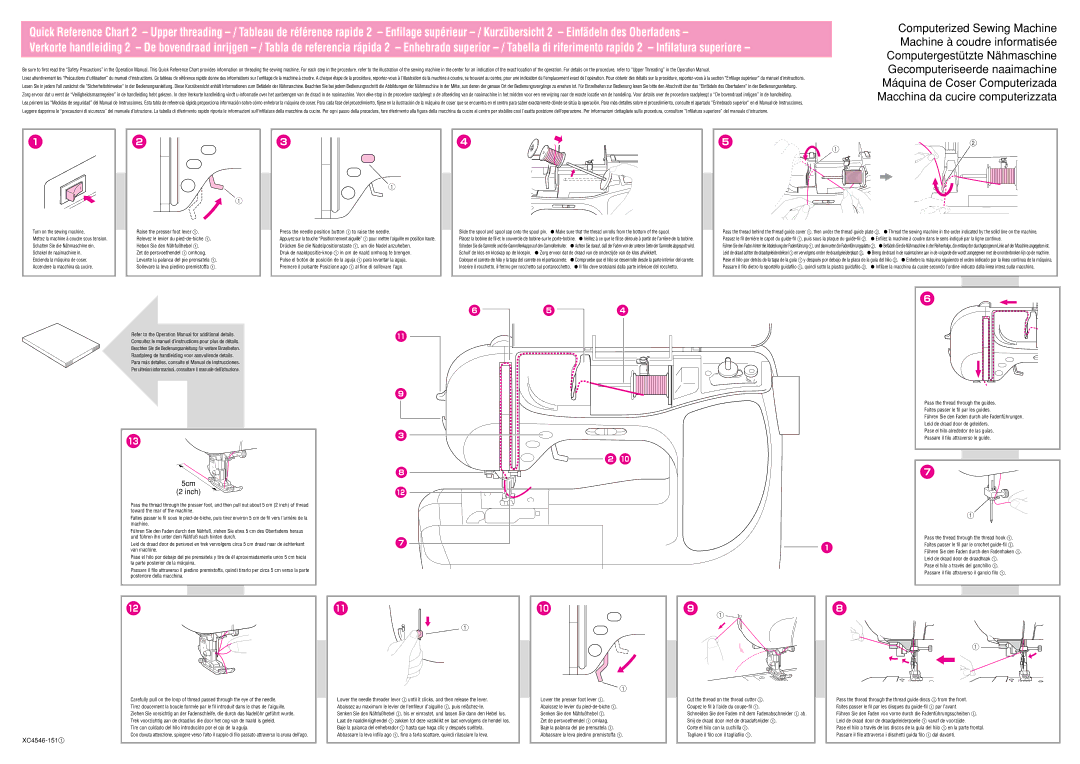KXC4589-051, XC4546-1511, NX-400Q/40 specifications
The Brother XC4546-1511, KXC4589-051, and NX-400Q/40 sewing machines exemplify the brand’s commitment to innovation, performance, and versatility. Each of these models caters to different sewing enthusiasts, yet they all share some core features that make them stand out in the crowded marketplace.Starting with the Brother XC4546-1511, this model is designed for both beginners and experienced sewers. It boasts an easy-to-use interface, including an automatic needle threader and a drop-in bobbin system which simplifies the threading process. With 40 built-in stitches, including decorative, quilting, and utility stitches, the XC4546-1511 allows users to explore their creativity. Additionally, the adjustable stitch length and width provide further customization, making it suitable for a variety of projects, from simple repairs to complex creations. The LED-lit work area ensures optimal visibility while sewing, enhancing precision and reducing strain on the eyes.
Next is the KXC4589-051, a robust and reliable sewing machine that comes with advanced functionalities. This model features a large sewing area, ideal for handling larger projects such as quilts or garments. Its computer-controlled system facilitates easy stitch selection through a user-friendly LCD display. With over 100 built-in stitches and numerous embroidery options, users can achieve professional-quality results. The KXC4589-051 also includes a speed control feature, allowing sewists to set their preferred speed, which is particularly helpful for intricate tasks. Durable construction and a metal frame ensure longevity, making it an excellent investment for dedicated sewists.
Lastly, the Brother NX-400Q/40 merges technology and tradition with its high-end features. Equipped with a powerful motor, this machine delivers superior performance even on thick fabrics. The included quilting foot and specialized accessories enhance the quilting experience, while the advanced needle positioning feature allows for greater accuracy when sewing intricate patterns. Its intuitive touchscreen interface simplifies navigation and customization of settings. A notable characteristic of the NX-400Q/40 is its ability to handle free-motion quilting, making it a favorite among quilting enthusiasts.
In summary, the Brother XC4546-1511, KXC4589-051, and NX-400Q/40 are thoughtfully designed machines that cater to a wide range of sewing needs. Each model offers unique features and technologies that empower users to unleash their creativity and enhance their skills, making sewing an enjoyable and fulfilling experience. Whether for basic repairs or elaborate quilting projects, these machines deliver quality and reliability, solidifying Brother’s reputation in the sewing machine arena.

